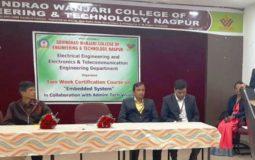
Digitization has engulfed almost every sector of the world. It has also influenced the Indian agricultural sector very actively. This is the reason; many digital footprints can be seen in the agricultural sector of India.
Many technical innovations have been successfully implemented in agriculture and several things come as a result which is why people who are involved in this sector are getting maximum emphasizing due to the outstanding expectation. The introduction of digitization in the agriculture sector would be the right thing that can perfectly meet the needs of farmers and consumers.
Digitization in the agriculture field is known as agri-tech. This is a process involved in the extensive use of modern technologies like the internet, cloud computing, and other latest technology trends. With the help of big data and other technical advancement, it would be the best thing to come up with the right kind of results that aid the agricultural sector.
A report published by Betway has highlighted how digitization is helping to improve the agricultural industry. The report highlights the key benefits of digitization, such as improved decision-making, cost savings, and increased efficiency. By collecting data through drones, sensors, machinery, and other advanced devices, farmers can quickly and accurately assess the health of their crops, the quality of their soil, and the overall performance of their land. This data can then be used to create detailed plans that can help to improve productivity, reduce wastage and increase profits.
How Is Digitization Shaping the Future?
These devices are mainly used in various telemetric devices like a satellite that provide weather-related information that enables producers to monitor crop growth in real-time and calculates plot performance along with a prediction of the output with considerable amounts of accuracy.
Digitization also includes the use of artificial intelligence (AI) that helps to evaluate data and provide powerful recommendations to maximize harvest quantity and quality. Furthermore, it enables producers to choose the finest crops to harvest based on geography and climate while also estimating the most productive uses of the farm machinery.
Accumulating all these factors, one thing is for sure, digitization has an enormous contribution to increased efficiency along with productivity while it helps to improve the decision-making criteria of farming and the stakeholders who are in this sector. The connectivity helps to streamline the farm and market linkage.
Predictions for Future
According to NITI Aayog, digitization in agriculture in terms of AI alone could touch approximately USD 2.6 billion by the year 2025. The most important thing is that this field is going to experience a CAGR of 22.5%.
If digitization is going to be perfectly implemented and the short-term targets are properly achieved. According to experts, the market size of the agricultural sector is expected to reach INR 111,916 billion by 2026. It is compared to INR 55,994 billion in the year 2020 with an expected CAGR which is 12 percent.
Agriculture will inevitably experience greatly benefit the country. Since, India has more than 1.3 billion of population, digitizing the sector is important to achieve the surge in demand for agricultural grain. It has a multitude of implementations.
According to the data, India is on the right path and it has securely transformed the traditional sector. This is an opportunity that will deliver outstanding results in the years to come.














